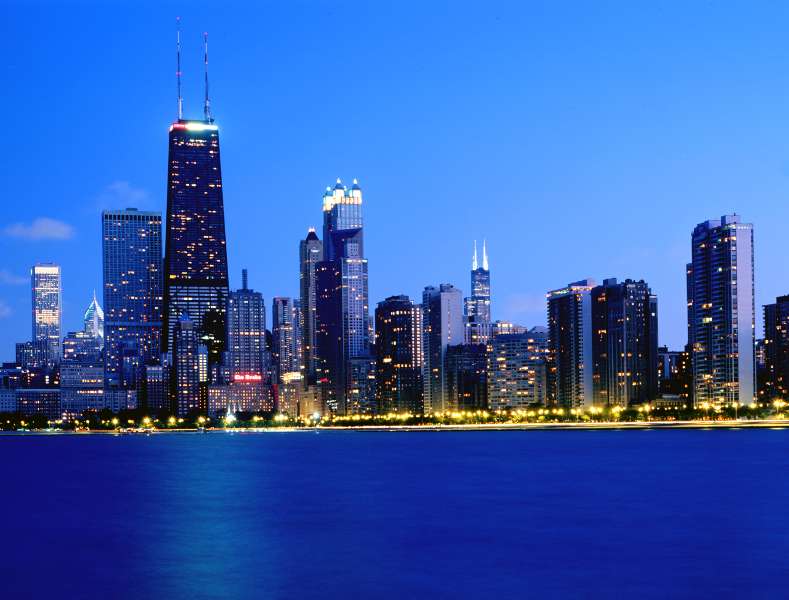Tell anyone that you're taking a trip to Beantown or The Big Apple and they'll likely know exactly where you're headed. Many cities across the country have adopted popular nicknames that are almost as well-known as the city itself. But where did these funny monikers come from? Read on to learn the origins of everything from "The Windy City" to "The City of Brotherly Love."

Chicago, Illinois: The Windy City

Anyone who's been to this Midwestern city can attest to its particularly breezy days because of the winds coming off Lake Michigan. But is blustery weather really at the root of Chicago's nickname? While it can't be confirmed, a popular theory is actually that the term was coined as early as 1876 in reference to the city's long-winded, bombastic politicians.
Philadelphia, Pennsylvania: The City of Brotherly Love

New York, New York: The Big Apple

Thanks to a 1971 promotional campaign by the New York Convention and Visitors Bureau, nearly everyone knows the bustling East Coast city as "The Big Apple." The expression dates back to the ’20s, when John J. Fitz Gerald, a horse racing reporter for the New York Morning Telegraph, used the slang term (which means "big shot") in some of his columns when referring to New York City racetracks. It continued to be used by everyone—from Walter Winchell referencing Broadway to jazz musicians nicknaming Harlem—until it came to encompass all parts of the city.
New Orleans, Louisiana: The Big Easy

Thanks to a famous New Orleans dance hall called The Big Easy, the Southern city is now known by the same name. The term also describes the town's relaxed atmosphere—their motto is even "Laissez les bons temps rouler," which is French for "Let the good times roll."
Baltimore, Maryland: Charm City

In the late ’70s, mayor William Donald Schaefer opened a visitors center in an effort to boost tourism, and copywriter Bill Evans had the idea of giving visitors a bracelet to add charms to as they visited different Baltimore attractions. Though the campaign ended up being too expensive to implement, the name stuck.
Jackson, Mississippi: Chimneyville

Mississippi's capital earned its nickname after the Civil War, when, in 1863, after the Confederate army retreated across the Pearl River, Union forces burned the city down. Only the chimneys of houses remained, thus dubbing the town "Chimneyville."
Santa Fe, New Mexico: The City Different

Take a look at any Georgia O'Keeffe painting and you'll see what Santa Fe is known for: rich colors and stunning nature. Combined with the town's emphasis on the arts and melding of cultures—including Native American, Spanish, Mexican, European and African-American—it’s proof enough that it's truly not your average town, making it "The City Different."
Portland, Oregon: Rose City

With warm, dry summers and rainy, temperate winters, Portland's climate is perfect for growing just about anything, including roses, which proliferate in the city. The town is even home to the International Rose Test Garden, the oldest official, continuously operated public rose test garden in the country, where different combinations of hybrid roses are grown.
Boston, Massachusetts: Beantown

During colonial times, a favorite Boston food was beans baked in molasses, because the sweet syrup was so prevalent in the city due to trading with the Caribbean. So while Boston baked beans may not be as common in the city today, the name certainly stuck.
Cleveland, Ohio: The Comeback City

In the ’60s and ’70s, Cleveland was dubbed the "Mistake the Lake" due to its financial problems (in 1978 it was the first U.S. city to default on its debts since the Great Depression) as well as an industrial waste accident that caused the Cuyahoga River to catch fire. Throw in corrupt public officials and racial unrest, and you have a city that was in major need of an overhaul. When Mayor George Voinovich took office in 1980, he energized the city; a construction boom, revival of business and a balanced budget prompted Time magazine to claim in December 1980: “Cleveland is making a comeback.”
- WomansDay -










.jpg)
0 comments:
Post a Comment